
By: Dr. Jorge Humberto Mejía
One of the most important activities of Strategic Management is to optimize the links between design and the implementation of the strategies. However, this task is not evident at all. Research and consulting activities have given me the opportunity to work with public and private organizations (small, medium and global companies) in Mexico and in France, and a set of experiences have allowed me to corroborate a recurring problem in literature.
Some very well known authors in the international arena such as Kaplan & Norton (2008) state that one of the main problems 21st century organizations face is the implementation of a strategy. There is abundant literature in strategic management and they mention this situation and show it in case studies (Kaplan & Norton 2008; Grant 2003). Notwithstanding the bibliography contribution, professional experience has allowed me to identify some characteristics that I describe in the following sections, and subsequently compare them to classic and contemporary literature on strategy. The objective of this article is to provide the reader some food for thought on the existing links between design and the implementation of strategies in organizations.
Below you will find two sections with two different ways by which organizations try to establish the links mentioned above. .
The Fragmented Implementation of the Strategic Management Activities
In this first section there is a synthesis of the results of research and other studies made of different kinds or organizations whose “strategy” emerges from “doing” daily operations. In these, most of the directors with whom I have had the opportunity to work, are in favor of a logic that they themselves call “the day to day”. Porter (1996), states that this logic can be classified within a set of activities that he calls ‘operating efficiency’. Two processes are described based on the ideas exposed by this author.
1. Daily transactions do not necessarily generate operational efficiency
To avoid confusions, we mention below what is understood in this article by efficiency. Based on Robbins & Coulter (2005), the term is defined as a capacity of the management team to obtain the ‘highest’ results with the minimum investment (p.7). When referring to investment, the word is also understood to mean other resources such as time, training, information to make decisions, amongst other.
The information that I have collected through magazines and direct observation in the organizations that I have studied, shows that not all organizations focus on operations are efficient. In them the daily operations and the ‘emergencies’ tend to consume 100% of their directors’ time. ‘Urgent’ matters take time away from what is ‘important’ and what is ‘important’ frequently becomes ‘urgent’. In this kind of organizations there are two parallel systems that contradict each other in practical terms. I call the first one, the ‘emergent’, and it allows directors to improvise and adapt to the multiple changing conditions of their environment. Efficiency over effective rules and therefore this kind of organizations face strong investments that produce erosion in terms of resources and personnel capabilities. In this kind of institutions the daily operation does not allow to foresee the contribution of operations to the organization’s strategy. As part of this category there are companies that surprisingly have found situations that put them in crisis. An example is a medium size company that had a significant dependence on the operations of Mexicana de Aviación; when this company stopped its activities in August 2010, the directors argued that this happening ‘had taken them by surprise’. They then started to hold meetings to begin their strategic design process. For this kind of organizations, strategic direction is an operational function whose added value is limited. It is important to highlight that the activities linked to the strategic direction are divided between the functional areas and there can hardly be integration amongst their multiple priorities. For the reasons mentioned, it is difficult for these organizations to optimize the links between daily practice and strategy.
The information that I have collected through magazines and direct observation in the organizations that I have studied, shows that not all organizations focus on operations are efficient. In them the daily operations and the ‘emergencies’ tend to consume 100% of their directors’ time. ‘Urgent’ matters take time away from what is ‘important’ and what is ‘important’ frequently becomes ‘urgent’. In this kind of organizations there are two parallel systems that contradict each other in practical terms. I call the first one, the ‘emergent’, and it allows directors to improvise and adapt to the multiple changing conditions of their environment. Efficiency over effective rules and therefore this kind of organizations face strong investments that produce erosion in terms of resources and personnel capabilities. In this kind of institutions the daily operation does not allow to foresee the contribution of operations to the organization’s strategy. As part of this category there are companies that surprisingly have found situations that put them in crisis. An example is a medium size company that had a significant dependence on the operations of Mexicana de Aviación; when this company stopped its activities in August 2010, the directors argued that this happening ‘had taken them by surprise’. They then started to hold meetings to begin their strategic design process. For this kind of organizations, strategic direction is an operational function whose added value is limited. It is important to highlight that the activities linked to the strategic direction are divided between the functional areas and there can hardly be integration amongst their multiple priorities. For the reasons mentioned, it is difficult for these organizations to optimize the links between daily practice and strategy.
In addition, for Leinwand & Mainardi (2010), this set of thoughts is a topic related to the organization coherence. It their article they state that an organization should focus in the competences (operations) they are good at, to then align them to the strategy and in this manner achieve links that generate coherence between the operation and the strategy, and its result would be (all other things being constant) a long term competitive advantage.
2. Daily operations do not necessarily result in integral strategies
The organizations which directors are focused on operational efficiency not necessarily have a strategy. There, strategy is conceived as a duality; on the one hand it is perceived as a complex, conceptual, multiphase notion and thus difficult to apply, but necessary to survive in the ocean of competitive complexity an organization has to face every day. Its directors repeatedly face the dilemma: strategy vs. operation. These generally choose operation, which in their opinion is what allows them to keep their organization alive. In this manner, the ‘strategic function’ category is created. The main problem here is that these functions are fragmented and are not necessarily convergent in terms of objectives and ‘functional’ interests. Leinwand & Mainardi (2010) state that it is extremely important that the incoherence derived from the fragmentation of the activities of strategic management in order to afterwards find the affinity that will allow them to develop sustainable competitive advantages.
Also, these organizations’ directors use the term strategy in a generic manner, and take for granted that all their members understand the same thing when they speak about ‘organizational strategy’. Unfortunately, this is not so, the discrepancies emerge at the different organization levels, and this creates confusion between the strategic activities and those that are not.
From this perspective, there are only a few organizations where their directors are able to enunciate their strategy in a clear, accurate and concise manner (Collis & Rukstad 2008). These organizations are prone to falling in the trap of setting, in general terms, some of the generic cases, the ‘path of the company’, scarcely identify the industry in which they participate, the mission and the vision are part of an unpractical philosophy in the reality they live in. Regrettably, their directors believe that if they have some objectives and plans, there is a strategy. Porter (2008) emphasizes some of the traps that analysts and persons responsible for strategic management must consider when doing the external analysis of their organizations. Some of them are: the preparation of descriptions instead of analysis, development of static analysis that ignores the key trends of the industry in which they compete, the confusion between cyclical and structural changes. The ‘strategic’ models used by these organizations are strongly influenced by the management fashion. Their directors think that the model or a certain methodology may be the solution to the problems of their organization. There are frequent changes of strategy and therefore the credibility of the members of the organization on new strategic proposals is definitively affected. Solidarity is achieved when there is a crisis. In synthesis, one can hardly find an organization that presents these characteristics that in turn has a strategy in accordance with the terms of Collis & Rukstad (2008).
The Design of Strategy and its Implementation
In other organizations, the author of this article has been able to prove the existence of protocols and managing committees focused on the design of a strategy that will be implemented later. In this category normally the General Director is considered to be the person responsible for the strategy. There are two modalities in this perspective: the organizations that design their strategy in cascade – where the General Management sets the strategy to be followed by the entire organization – and those where the design of the strategy emerges from the work of the members of the management committee with its subordinates and is subject to discussion at the General Direction in order to integrate the problems and comments of other members of the organization (other than the management committee members). Both processes are described below.
From the General Direction to the Rest of the Organization
The following characteristics, which basically coincide with Grant’s research (2003), are listed below:
- The General Direction and its management committee identify the general plans and global strategic objectives and also the way to apply them.
- A diagnosis is made of the resources and capabilities (personnel) required for each strategic activity.
- Plans are set for each function; these to not necessarily detail their operation but they do detail their scope. Based on the design, the idea is to establish links between the strategy and the operation. Repeatedly key activities are identified that could limit the startup of the plan established.
- With the two previous elements a proposal is submitted to the Management Committee. In the case of a corporation it will be sent to the highest level of the organization.
- After having reviewed and approved the proposal pursuant to coherence terms (Leinwand & Mainardi 2010) a comprehensive plan is developed for the entire organization. The plan sets the key objectives and added value expected in each function to be contributed to the strategy.
- As the case may be, incentives are set in order to make strategic achievements, and also the actions to be considered pertinent for that purpose.
In most cases, this kind of organizations has to what was called in the first section operational efficiency (Porter 1996). In them, links are established from the design and the daily operation. Some problems faced in the strategic process are related to the dynamic analysis of the stakeholders, when the formulation of a strategic statement is too complex and thus it is difficult to implement (Collis & Rukstad 2008). Lack of clarity that emerges from the design of a strategy consequently leads to the generation of endless execution problems. Here the design of the strategy is the problem and not only its implementation, as is stated by Kaplan & Norton (2008).
In these cases, complex tools are used and they are not properly explained to the organization members who should execute the designed strategy. In some cases, the dilemma between the strategy and operation surfaces again. Specially when there is little time to achieve the objectives and at the same time the General Direction demands reports and meetings on the strategic issues.
From the Operational Basis to the General Direction and from It to the Rest of the Organization
Organizations of this type have experienced members in their top management committees. These have known for a long time the ways in which the organization operates. In general these are persons that have gradually gone up the organization pyramid. This contributes some recognition by the persons who depend on them from the hierarchy standpoint, and this is derived also from the deep knowledge that these persons have of the organization’s management committee, its problems and current challenges.
Therefore, the members of the organization are the ones who repeatedly send to their superiors (top management committee members), analysis of the different hierarchy levels in order to state the strategic objectives and the operational methods proposed by the responsible persons and to be discussed at the strategic design meetings chaired by Top Management. These activities are carried out throughout the year in very short meetings (30 minutes at the most), and here top management committee members gather information from their subordinates.
Some of the benefits of designing and implementing the strategy in this manner are that it has been identified that in this kind of organizations the formulation of the strategy tends to be clearer according to Collis & Rukstad (2008). In addition, the implicit empathy and the commitments developed between the members of the organization frequently favor the implementation of the strategic proposal. Notwithstanding the benefits mentioned before, an objection raised by the organizations that have this kind of programs is the time they should invest so that the management committee members practically know the key processes of the organization’s operation and are able to develop close links with personnel.
Conclusions
The synthesis of the four groups of organizations analyzed in this article allows us to identify some of the key features to be considered if one wants to make a strategy based on any of the four groups. The lessons contributed to the last one could be of great value if the reader has the time and the resources required to implement it. I ask that you to be very careful with this article since it is based on the analysis of cases and one should be very careful when making general statements of the results obtained.
In order for each group or organizations described in this article, the strategic planning process is identified and as followed by these institutions is not necessarily linear as shown in most of the texts that study the strategy (Barney & Hesterly 2010; Hill & Jones 2008). In this way, the objective is to convey to the reader this set of thoughts hoping that they will be useful to him when making strategic decisions.
In order to favor strategic thinking in terms of the link between strategy design and its execution, at the ITAM business school we developed an integration proposal of several classical and last generation models. We provided a solid education on strategy topics from a theoretical-practical perspective. These are topics related not only to the reproduction of the classic models and last generation models, but also understanding them in terms of their organizational and ethical implications, where the complexity of the business to be faced as decision makers is considered. With this we hope to contribute to the development of a more fair and prosperous society.
References
Barney J., Hesterly W. (2010), Strategic Management and Competitive Advantage, Pearson Prentice Hall, 3ª Ed.
Collis & Rukstad (2008), Can you say what your strategy is? Harvard Business Review Vol 86 Issue 4 April pp. 82-90.
Grant M. (2003), “Startegic Planning in a turbulent environment: Evidence from the Oil Majors“, Strategic Management Journal, Vol. 24: 491-517.
Kaplan and Norton (2008), The Execution Premium Harvard Business Press.
Leinwand & Mainardi (2010), The Coherence Premium Harvard Business Review, Vol. 88 Issue 6 Jun, p86-92.
Porter M. (2008), “Las cinco fuerzas competitivas que le dan forma a la estrategia“, Harvard Business Review A.L., Enero, p1-15.
Porter M. (1996), “HYPERLINK “http://www.hbsp.harvard.edu/hbsp/hbr/articles/article.jsp?ml_action=get-article&articleID=96608&ml_page=1&ml_subscriber=true”What is strategy?”, Harvard Business Review, Nov/Dec, Vol. 74 Issue 6, p61-78.
Robbins S. & Coulter M. (2005), Administración, Pearson Educación 8a Edición. p. 7.
Más artículos Relacionados:


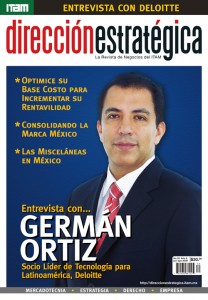

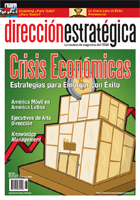



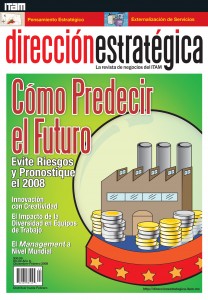



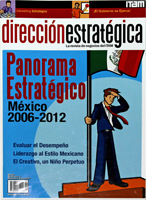
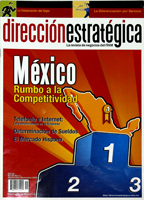

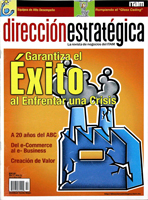


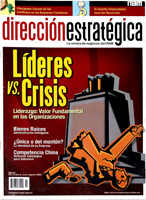






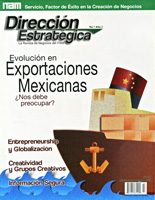



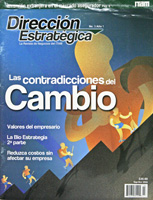
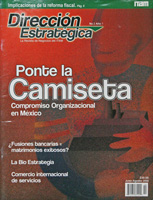

One Comment
Me parece que algo de suma importancia en estos casos es el empowerment, ya que esta herramienta permite a los empleados resolver por si mismos problemas que no trascienden a nivel general; de esta manera los gerentes se enfocan en decisiones de mucho peso las cuales puedan definir el futuro de la empresa